Riz
Vous pouvez regarder les résultats de ce végétal avec ou sans utilisation de GEN200.
L’application de GEN200 a donné pour résultat en 30% à 40% d’amélioration de rendement du riz avec augmentation de la qualité et réduction des dommages par insectes ou maladies.
GEN200 schéma d’application pour riz pour 500 ha
|
Sr.No.
|
Stade de croissance
|
Quantité
|
Dilution
|
|
1
|
Phase de tallage(20-25 DAT)
|
250 Litres
|
250000
(1000 Fois)
|
|
2
|
Phase de reproduction
(45-50 DAT)
|
250 Litres
|
250000
(1000 Fois)
|
|
3
|
Phase de développement du grain
(70-75 DAT)
|
250 Litres
|
250000
(1000 Fois)
|
|
Total
|
750 Litres
|
|
Attention:
- Contròlez la compatibilité avant de mélanger avec un autrre produit.
- Les deux premières applications sont fort nécessaires pour l’évidente différence de rendement.
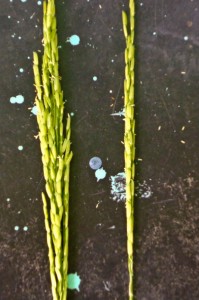
Riz avec GEN200 (gauche)
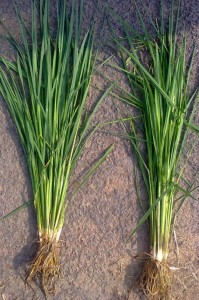
Riz avec GEN200 (gauche)
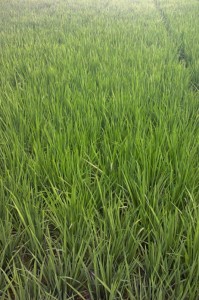
Riz avec GEN200
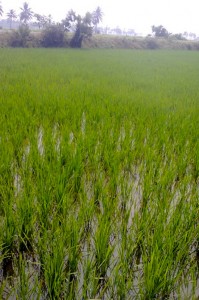
Riz sans GEN200
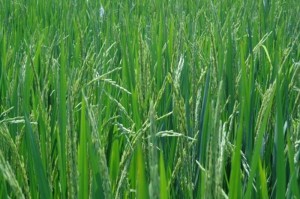
Riz avec GEN200
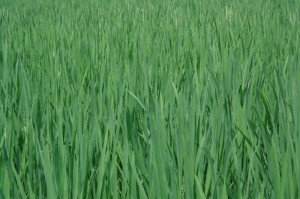
Riz sans GEN200
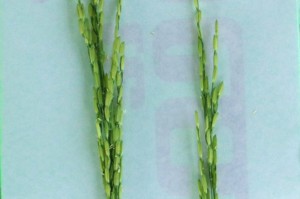
Riz avec GEN200 (gauche)
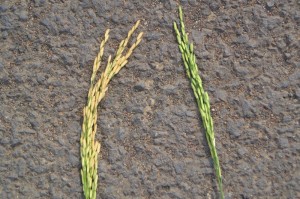
Riz avec GEN200 (gauche)
Calcium silicate sources can be used successfully in the integrated management of brown spot and panicle blast in flood-irrigated areas of tropical lowland regions. Depending upon the source and dose of Si fertilizer applied to Sideficient soils, the severity and incidence of these diseases can be reduced and the yield increase.
Depletion of the stratospheric ozone layer due to the emission of chlorofluorocarbons and other trace gases has resulted in increased solar ultraviolet-B radiation on the earth’s surface, which would reduce above ground biomass and plant height, and increased DNA damage, and the effects of UV-B radiation on plants showed that they responded similarly in Arctic, Antarctic and lower latitudes. Thus, there is an urgent need to find out effective ways to alleviate such damages on plant growth and development.
This study investigated the role of silicon (Si) and manganese (Mn) rates on the activity of peroxidases (POX), polyphenoloxidases (PPO) and phenylalanine ammonia-lyases (PAL) on rice plants non-inoculated and inoculated with Bipolaris orzyae.

Rice (Oryza sativa L.) is a typical Si-accumulating plant and is able to accumulate Si up to >10 % of shoot dry weight. The cell wall has been reported to become thicker under Si-deficient condition. To clarify the relationship between Si accumulation and cell wall components, the physical properties of, and macromolecular components and Si content in, the pectic, hemicellulosic, and cellulosic fractions prepared from rice seedlings grown in hydroponics with or without 1.5 mM silicic acid were analyzed. In the absence of Si (the -Si condition), leaf
blades drooped, but physical properties were enhanced. Sugar content in the cellulosic fraction and lignin content in the total cell wall increased under -Si condition. After histochemical staining, there was an increase in cellulose deposition in short cells and the cell layer just beneath the epidermis in the -Si condition, but no significant change in the pattern of lignin deposition. Expression of the genes involved in secondary cell wall synthesis, OsCesA4, OsCesA7, OsPAL, OsCCR1 and OsCAD6 was up-regulated under -Si condition, but expression of OsCesA1, involved in primary cell wall synthesis, did not increase. These results suggest that an increase in secondary cell wall components occurs in rice leaves to compensate for Si
deficiency.














 English
English Nederlands
Nederlands Deutsch
Deutsch Español
Español Français
Français Italiano
Italiano